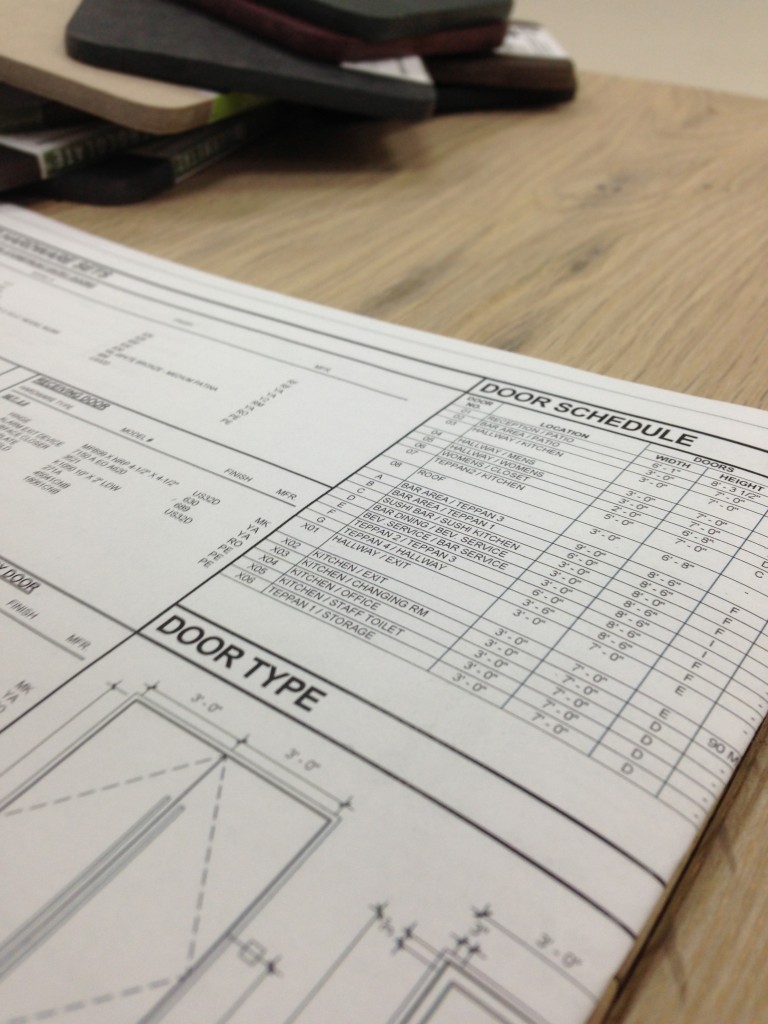
Beware: I’m on my “your door hardware specification is SUPER important, please stop neglecting it!” soapbox again. I can’t stress the importance of an adequately specified schedule enough – as seen in prior posts here, here, and here. That being said, I understand you don’t always have time to do a thorough breakdown of every component I’ve previously recommended. But just because you don’t have time to revamp your door and hardware schedule in its entirety doesn’t mean you can’t review your current schedule and verify that these four super important things are appropriately outlined in your door hardware specification.
1. Thorough Door Hardware Specification
Verify your hardware is specified in detail versus a standard product guideline. Some architects, in conjunction with their client’s wishes, will call out a type of hardware only i.e. privacy lockset. You should always specify the exact product you require – this will ensure brand consistency, quality, finish consistency, and ease of maintenance when the need arises. A thorough door hardware specification will include the following:
i. Manufacturer, product number, and finish specification
ii. Location of the opening
iii. Door Handing
iv. Dimensions and door/frame type
2. Separate Door Hardware Specifications for Every Opening
Each door location is different in its security needs. You wouldn’t put the same type of lever set on a bathroom door and that you would put on your entrance door, right? Specifically constructed schedules for each opening will maximize the security, life cycle, and quality of the hardware you’re receiving. Not to mention, the reduction in lifetime maintenance costs when hardware is applied correctly.
3. Complete Door Hardware Specifications
Does every door opening have ample information? For the sake of convenience, your openings should these have five pieces of vital information:
i. Location, dimension, and handing
ii. Detailed frame type and specification
iii. Detailed door type and specification
iv. Hardware set to be referenced, general description of each item, and associated quantities
v. Architectural drawing of the door
4. Heavy Duty Hardware
If you’re managing a busy facility (every manager’s dream, right?!) you’re hoping for high foot traffic. Am I right? If your goal is high foot traffic, wouldn’t it make sense to accommodate all those beloved customers with hardware that will stick around for the long haul? As we’ve discussed in the past, all hardware is not created equal. How long do you think a grade three lever set, cycle tested to withstand approximately 20,000 cycles, will last on a facility seeing 500 patrons a day? That math does NOT work in your favor, my friends. Just remember – the upfront cost will be recouped tenfold by going with the grade one, heavy duty hardware initially. (Did you know: Grade one hardware is cycle tested to withstand 800,000 cycles?)
This is by no means, an exhaustive list – for that head over to one of those in depth posts I mentioned here, here, and here – but it is a step in the right direction when it comes to maintaining the integrity of your door openings, the safety of your staff and patrons, and reducing the lifetime cost of your doors and hardware.
Google
